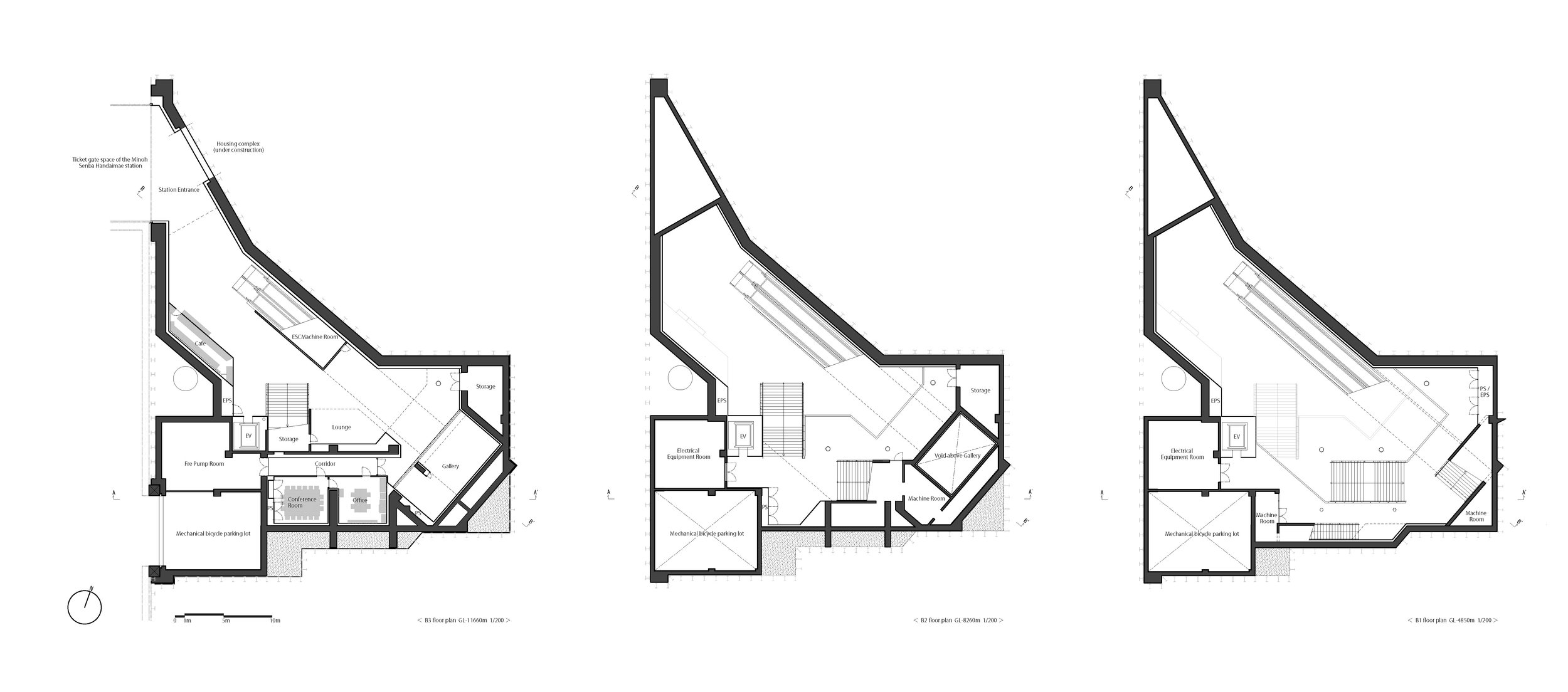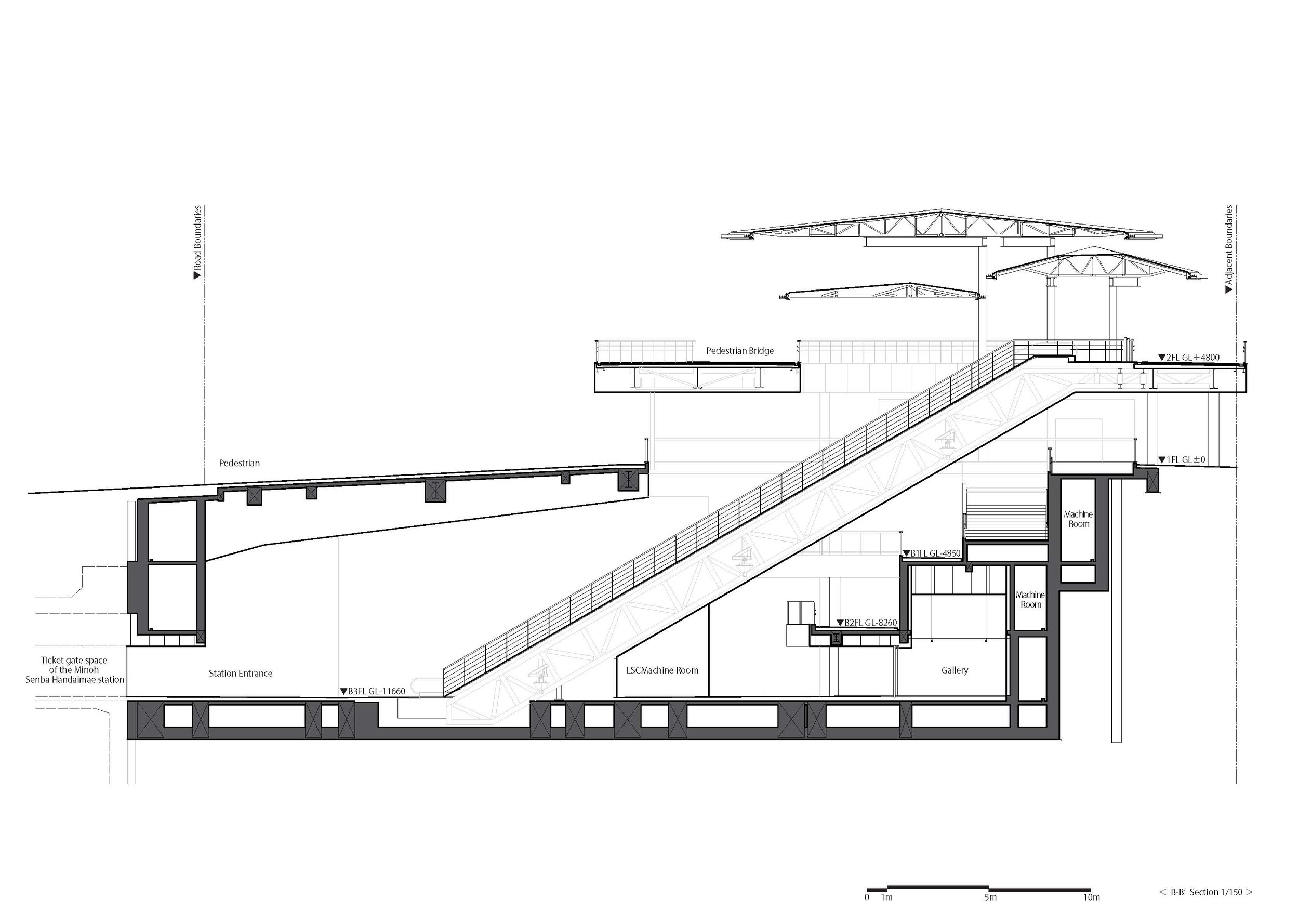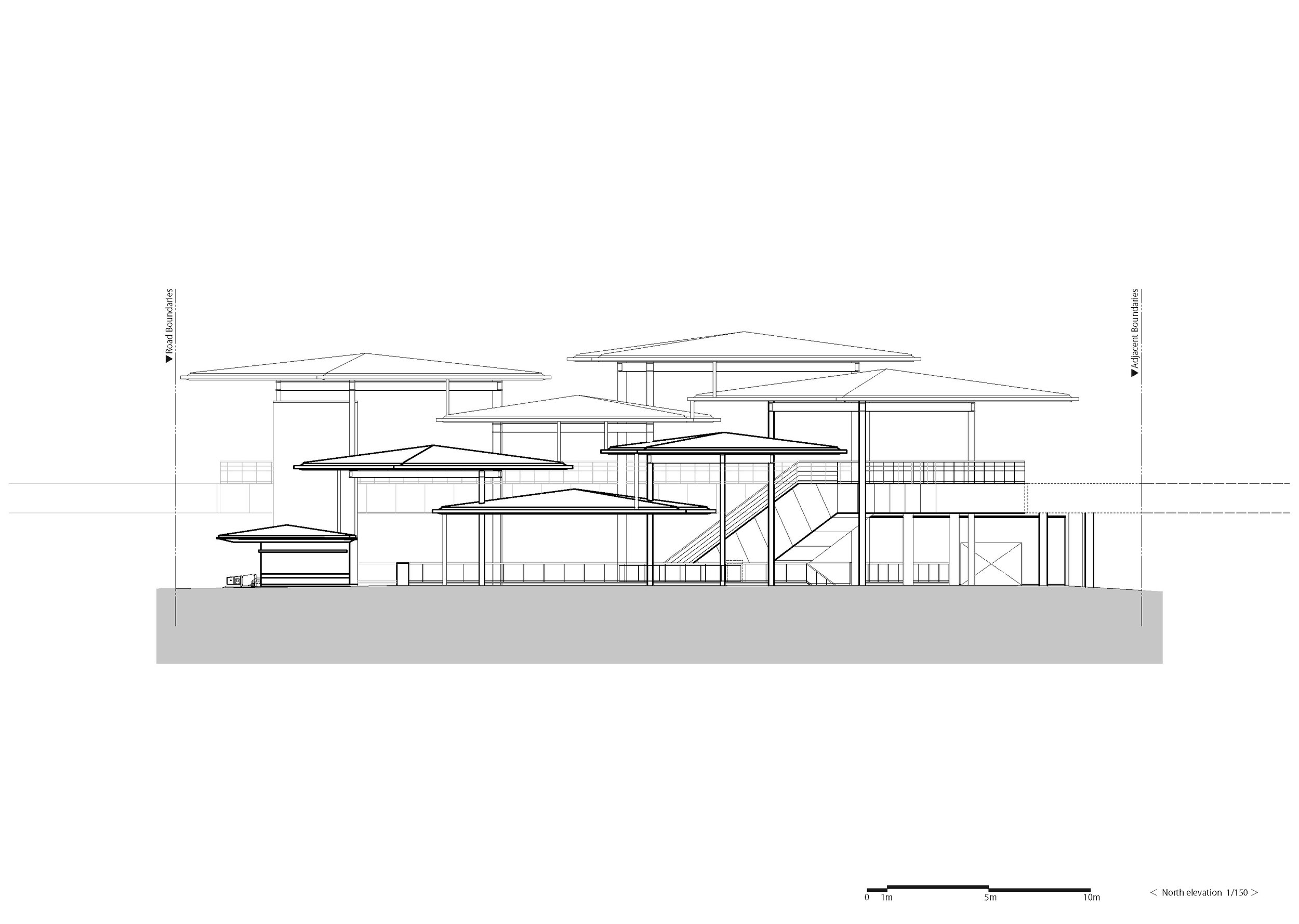Minoh-Senba Handai-Mae Station Entrance designed by GEO-GRAPHIC DESIGN LAB. + TOHATA ARCHITECTS & ENGINEERS. (Japan)
Station entrance conceived not merely for transit but as a communal area.
This project constitutes the ingress expanse adjacent to the recently expanded terminus of the Osaka Metropolitan Subway's Midosuji Line, presently elongated in the northerly trajectory. Initially, its functional requirement was to serve as the passageway connecting the third basement floor station entrance to the ground level and pedestrian deck. However, the design competition facilitated the development of this station entrance that transcends its utilitarian purpose, transforming into the public place. This underground public place, situated in Minoh City in Osaka, JAPAN with its abundant natural surroundings, provides ample room for residents to experience the sense of daily life in the city. Reflecting on historical station, such as New York's Central Station, which boasted expansive communal areas, contrasts with recent trends where rising land prices surrounding stations have led to constructions predominantly catering to commercial needs. In this context, the reevaluation of station typology was deemed necessary. The project aimed to establish the semi-external space that harmonizes with the distinctive natural topography and man-made features of Minoh City, renowned for its waterfalls and autumn foliage. This envisioned space was designed with the intention of encouraging users to linger and stay at their leisure, promoting more engaging and community-oriented station experience.
Demonstrating an understanding of human cognition to enhance personal engagement within a space is imperative.
Observations suggest that individuals, when situated in the environment featuring theceiling height of 6 meters or more, tend to disregard the ceiling and exhibit behaviors akin to being outdoors. Our proposition involves the structural arrangement comprising multiple membrane roofs converging at the elevation that encompasses the pedestrian deck level. This design facilitates the creation of the underground space that imparts thenatural ambiance, courtesy of diffused light permeating through the membranes and the interplay of natural light and wind filtering through the overlapping layers. The verification of roof overlap was established through simulations, ensuring that precipitation, even in the event of a 30-degree angle rainfall from all directions, would not impinge upon the escalator.
Given the irregular shape of the site, characterized by an approximately 45-degree angle, the staircase connecting the third basement floor to the ground level was strategically rotated to encircle the central void. Expansive landings oriented in diverse directions intersect to form a three-dimensional topography. By gazing into the central void, each floor presents the distinct perspective, carefully orchestrated to prevent the intersection of lines of sight. Furthermore, situated behind the stairs ascending to the ground level, the gallery and office space is positioned. Combined with the presence of the cafe on the third basement floor, adjacent to the entrance, this arrangement fosters the environment conducive to prolonged stays at the entrance.








Planning & Drawings





Designer Profiles
Shigeki Maeda
Shigeki Maeda
1974: Born in Osaka/ 1998: Graduated from Osaka University/ 2000-2010: Worked at Dominique Perrault Architecture (DPA) as Chief Architect/ 2010: Established Geo-Graphic Design Lab/ 2010 - 2013: Lecturer at Osaka Institute of Technology, Faculty of Engineering 2013 - 2018 Associate Professor at Osaka Institute of Technology / 2021 - 2022 Visiting Professor at Kobe Design University / 2023 Director of Tokushima Prefectural Eastern Disaster Prevention Center, Okinosu Indoor Park.
Fujihiro Nakanishi
Fujihiro Nakanishi
1967:Born in Nara / 1989:Graduated from Osaka Institute of Technology, Department of Architecture, and joined TOHATA ARCHITECTS & ENGINEERS., currently General Manager of the firm's Design Office / 2017~lecturer at Osaka Institute of Technology,2023~lecturer at Osaka Institute of Technology Graduate School / JIA Excellent Architecture Selection & Selected Works of the Architectural Institute of Japan
http://www.tohata.co.jp/



